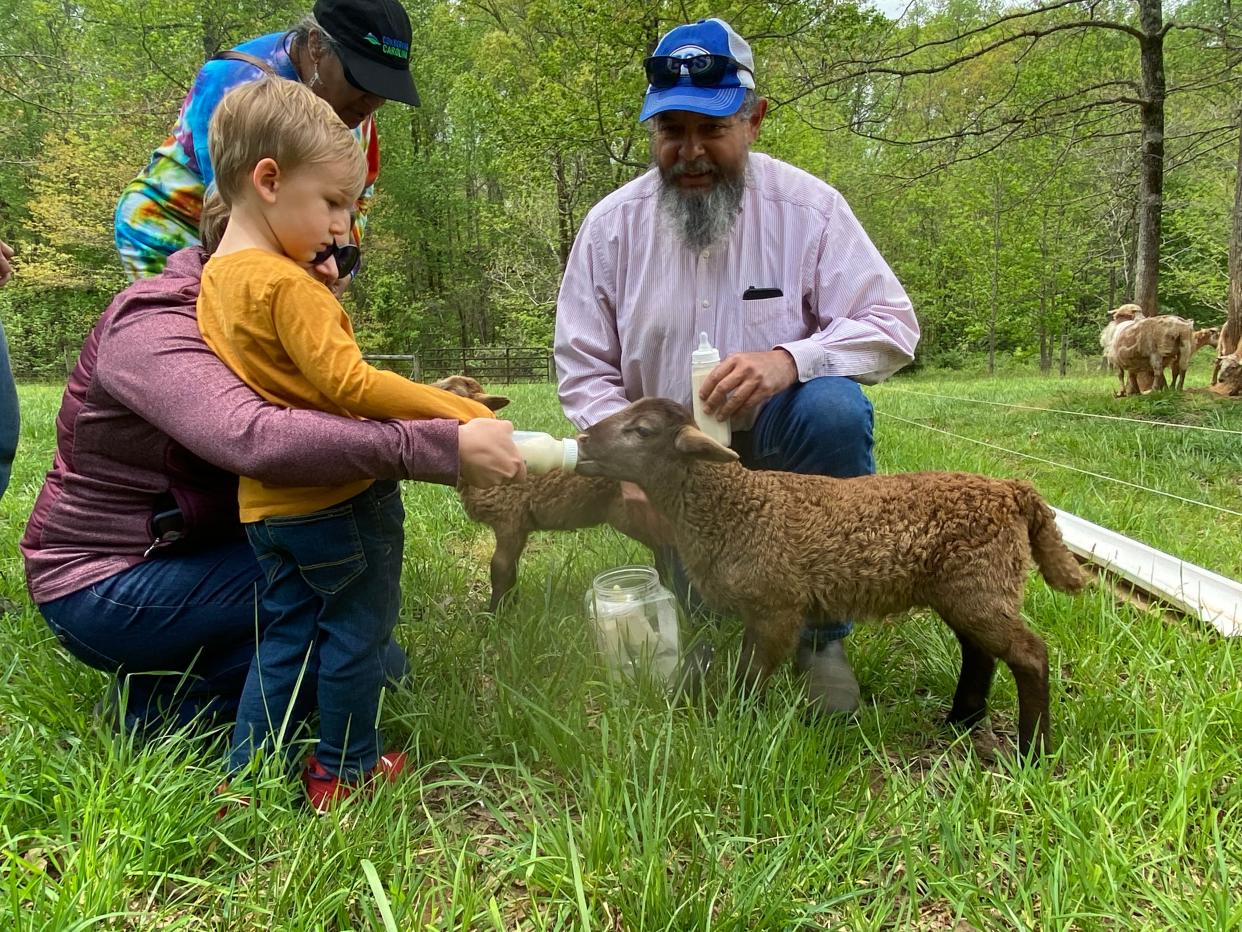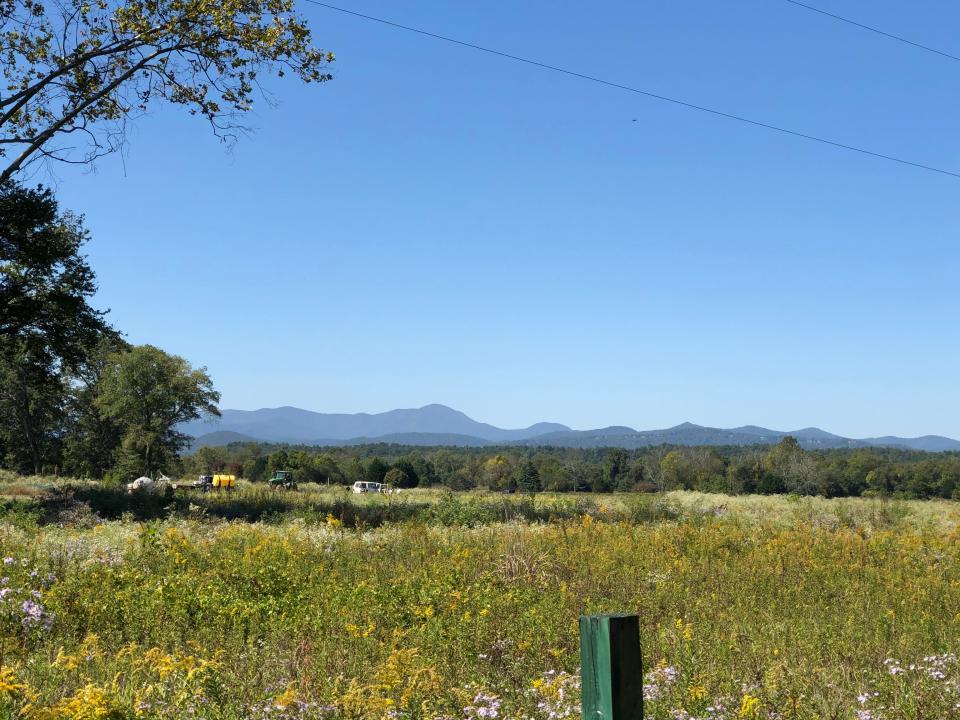Conserving Carolina helps protect two farms forever in Henderson and Polk counties


Two local farms are now protected forever with conservation easements, saving their productive farmland and scenic beauty for future generations.
Conserving Carolina worked with landowners to protect San Felipe Farm in Polk County and much of Plumlea Farm in Henderson County, for a total of 41 acres, according to a recent press release from Conserving Carolina.
“Conserving Carolina has protected many larger acreages, but these comparatively smaller acreages offer significant benefit to the local community," said Tom Fanslow, Conserving Carolina’s Land Protection Director, in the press release. "Farm operations help support the local economy through purchase of services and supplies, and both farms protect the rural character of the land. Anyone driving down Peniel Road or Jackson Road can enjoy the scenic view of these farms. At San Felipe Farm, people park on the side of the road to photograph the spring lambs.”
San Felipe Farm takes its name from a coffee plantation in Venezuela that belonged to Rafael Bravo’s grandmother. Bravo's family has farmed for generations at the foot of the Andes Mountains. He cherishes memories of working a ranch on horseback and sleeping outdoors in a hammock. He met his wife, Mary, while they were both exchange students in England, and he went on to work in agriculture and the food industry in the United States.
But once their children were grown, the couple decided to pursue their dream of farming.
Today they raise sheep on their 18.5-acre farm in Columbus in Polk County, using sustainable farming methods that leave the land healthier and more fertile than they found it, the release said. They practice rotational grazing, a method that avoids wearing out the soil and returns fertilizer to the ground. On their small farm, they are also raising a dairy cow, chickens and a large garden.
“Since we moved here, we have felt that San Felipe is a special place. It has a special beauty. We want to keep it as is so that future generations will be able to enjoy it as well,” Bravo, who serves on Conserving Carolina’s Board of Directors, said in the release.
At Plumlea Farm in Fletcher, the Roberts family protected two parcels of farmland that boast prime agricultural soils. These 22.7 acres of rich farmland are currently used to grow corn and pasture ponies, alongside woodland and riparian habitat for wildlife. The protected land borders Hoopers Creek, a tributary of Cane Creek, and it’s located across from the Bill Moore Community Park and Cane Creek Greenway.
In an area that is developing rapidly, this protected farmland preserves the open scenery around the popular park. This land also adjoins a tract where the Roberts family completed a stream restoration project, improving both habitat and water quality.
“We wanted to preserve it for farming as more land is developed in Western North Carolina," alndowner Fletch Roberts said in the press release. "Also, we want to show how farming and protecting the environment can mutually exist. Finally, it’s an incredibly beautiful piece of property with long range views of Mount Pisgah and Mount Mitchell.”
Both of these families donated a portion of the value of their conservation easements. Funding to protect the land also came from NC Agricultural Development & Farmland Preservation Trust Fund and the USDA Natural Resources Conservation Service.
“Farm preservation has played an important role in helping both owners plan for passing the land to the next generation. These owners can rest assured that their tradition of responsible farming will continue, and the payments they received from state and federal farm programs mean they won’t have to sell off house lots to generate cash for family needs,” Fanslow said.
In order to qualify for these funding programs, a farm must contain a minimum of 10 acres and be enrolled in the local voluntary agricultural district (VAD). The county Soil & Water District helps owners enroll land into VAD. These two farms add to more than 47,000 acres of land that Conserving Carolina has worked with landowners to protect forever. This includes private conservation lands where landowners retain ownership while agreeing to conserve their farmland, forests, streams, rivers, wetlands, or other important natural resources.
Conserving Carolina has also helped to protect many parks and natural areas that are now open to the public. Among these are an expanding network of hiking trails in the Hickory Nut Gorge; the public lands such as DuPont State Recreational Forest, Chimney Rock State Park, Headwaters State Forest, and Little White Oak Mountain; and numerous local parks and greenways, including the future Ecusta Trail.
“Together, these public and private conservation lands make our region more resilient to climate change. They also pass on to future generations a legacy of scenic beauty, natural wonders, and productive farmland,” Conserving Carolina Executive Director Kieran Roe said in the press release.
Conserving Carolina is a local, nonprofit land trust working primarily in Henderson, Polk, Transylvania, and Rutherford Counties as well as the Landrum, South Carolina area. The mission of Conserving Carolina is to protect, restore and inspire appreciation of the natural world. To become a member or volunteer, go to conservingcarolina.org.
This article originally appeared on Hendersonville Times-News: Conserving Carolina helps protect two farms forever in Henderson and Polk counties

